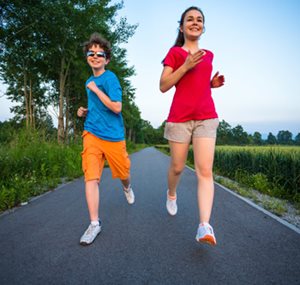Q: Is it safe for children to run long distance?
Yes. Children are now participating in marathon running. To date, there is no scientific evidence that supports or refutes the safety of children who run these distances.
Q: How can I keep up with fluid loss during a run?
Drink 10 to 15 ounces of fluid 10 to 15 minutes prior to running and every 20 to 30 minutes along the route.
Q: How often should I replace my running shoe?
About every 250 miles.
Q: When is the best time to run?
During hot months, avoid running during the middle of the day.
Questions to ask your doctor:
- Is it safe for my child to run long distance?
- What are the risks of running?
- What are the benefits of running?

 POSNA.org
POSNA.org

